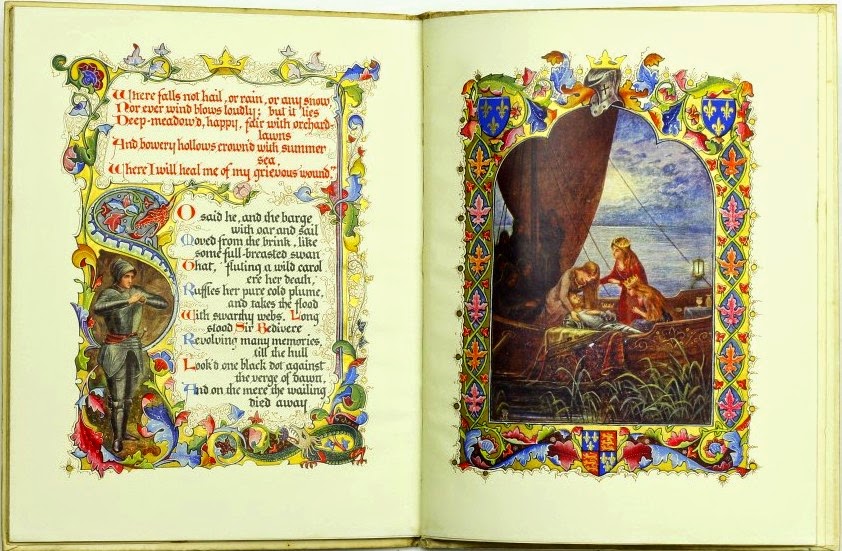 |
| Morte d'Arthur |
Morte
D'Arthur, a Poem
Written
Out and Illuminated by Alberto Sangorski
 |
| Alfred Lord Tennyson |
Alfred Tennyson was born on August 6, 1809 in Somersby, England. He attended Trinity College in Cambridge. Tennyson is chiefly known for his poetry, an art form that had interested him since the age of six. His best known work is the Idylls of the King. Tennyson was appointed Poet Laureate of England in 1850 and became the Baron of Aldworth and Farrington in 1883. Tennyson was still writing his his 80s, and died on October 6, 1892 near Haslemere, England.
Alfred Lord Tennyson’s Morte d’Arthur, written as early as the spring of 1835, was a retelling of the third, fourth and fifth chapters of the twenty-first book of Malory’s Romance about the legendary King Arthur, Guinevere, Lancelot, and the Knights of the Round Table. Tennyson later would incorporate a much extended and altered version of the poem into his The Idylls of the King, as the last section titled ‘The Passing of Arthur’.
Alberto Sangorski is an artist who should be of special
interest to all who appreciate great picture-making. Little is known about this
artist or his works by illustration enthusiasts, because he specialized in
illuminated manuscripts. Very little of his work ever made it into print, and
most of his books were hand-crafted wonders for wealthy collectors. Some
editions of his work were available in elaborately reproduced volumes with gilt
edges. Others were not so carefully manufactured. Sangorski created his work
during the Golden Age of Illustration, starting his trade as a secretary to a
goldsmith. The illuminator Alberto Sangorski (1862-1932) was late to the world
of calligraphy, at the age of 43 beginning to work for his younger brother
Francis in the famous Sangorski and Sutcliffe bookbinding firm. This bindery is
still considered one of the finest in the world.
 |
| Sangorski and Sutcliffe Forwarding Department Poland St. 1923 |
 |
| Omar Khayyám’s Rubáiyát |
One of his greatest achievements was a unique jewel bound version of Omar Khayyám’s Rubáiyát, now referred to as ‘the Great Omar,’ which never reached the American collector who commissioned it as it was sent across on the ill-fated Titanic in 1912.
*The Internet Archive has a scan of this book from a finer
print edition by the Graphic Engraving Co. for Chatto & Windus, which you can see HERE.
Source:
publicdomainreview.org
Internet Archive

No comments:
Post a Comment